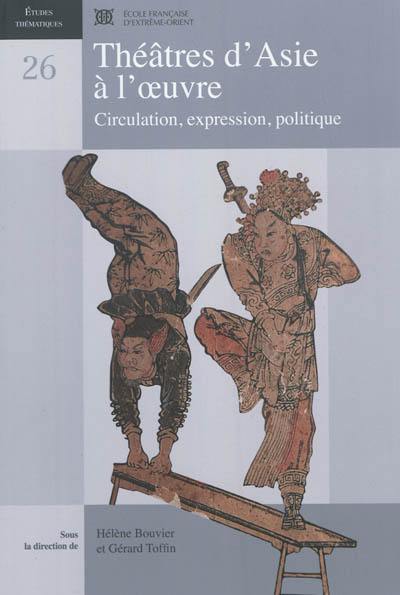
Collection(s) : Etudes thématiques
Paru le 19/06/2012 | Broché 255 pages
Public motivé
Théâtres d'Asie à l'oeuvre
Circulation, expression, politique
De l'Inde à la Chine, le théâtre constitue un phénomène d'une ampleur et d'une richesse remarquables. Trois grands thèmes sont ici abordés. Le premier traite de la circulation des traditions relatives à ces spectacles et tout particulièrement des échanges entre cultures lettrées et populaires. Les processus d'emprunts, d'acculturation, de vernacularisation sont au centre de l'analyse. Le deuxième thème est consacré aux formes et aux moyens d'expression, aux techniques de l'acteur, à la musique et à la scénographie. Le troisième thème considère le rôle du contexte politique et du pouvoir. Ces expressions théâtrales étant capables de s'agréger des fonctions rituelles, religieuses, politiques ou économiques, les États et les groupes ethniques les ont chargées d'éléments identitaires. Les contributions rassemblées partagent une approche anthropologique commune des théâtres d'Asie : fondamentalement historique, attachée à la dimension religieuse autant qu'aux aspects esthétiques de la performance, et attentive aux relations entre commanditaires, publics et acteurs.
Asian Theatre in Action
Circulation, Expression, Politics
From India to China, « théâtre » refers to a rangeof phenornena of extraordinary richness. This volume treats three principal themes. The first is the circulation of traditions relative to these performances, particularity the exchanges operating between literary and popular cultures. Processes of borrowing, acculturation, and vernacularisation are at the centre of this analysis. The second theme covers forms and means of expression, techniques of the actor, to music and scenography. The third theme concerns the role of the political context and power relations. These theatrical expressions being capable of taking on ritual, religious, political or economic functions, States and ethnic groups infuse them with elements expressive of local identity. The contributions brought together here share an anthropological approach to Asian theatres : a fundamentally historical anthropology, cognizant of religious and aesthetic dimensions of performance, and attentive to the interplay of patron, audience and actor.